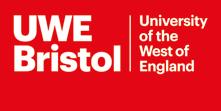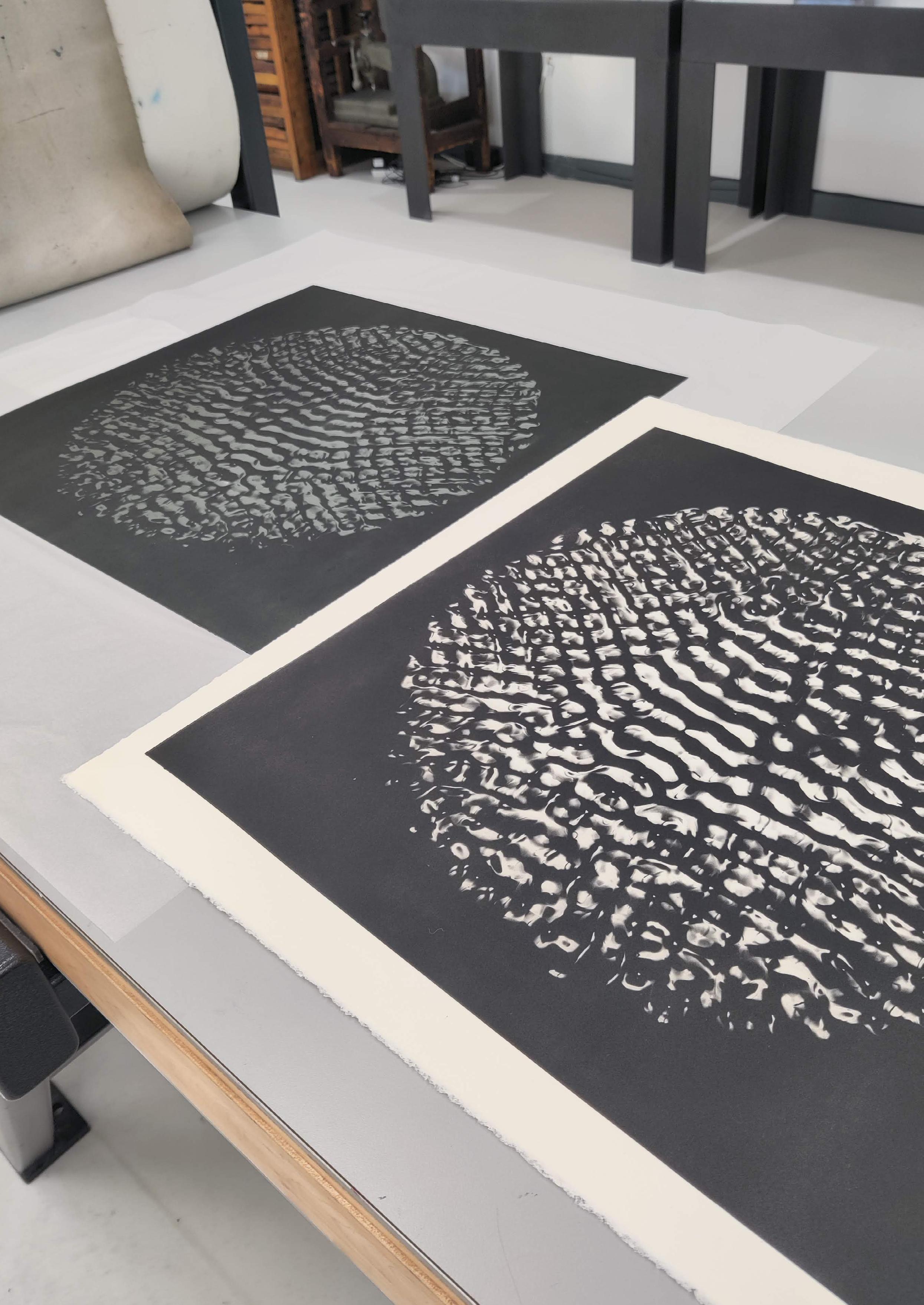TRACY HILL
Mark making, the body and movement, and understanding how the human body receives unseen energy when walking invites possibilities to explore how we translate sensory responses to walking in the landscape.



Mark making, the body and movement, and understanding how the human body receives unseen energy when walking invites possibilities to explore how we translate sensory responses to walking in the landscape.


Tracy joined the Centre for Print Research (CFPR), University of the West of England (UWE), for an artist residency in 2022. She worked with Dr Nazmul Karim, Associate Professor for Novel Print Processes and Materials (Graphene), to undertake innovative material and technological investigations to combine traditional printmaking with the super conductive possibilities of Graphene.
The aim was to create a print that was able to conduct energy when touched by a human hand, with the potential to engage a viewer through visual, sonic and sensory experiences. The edition demonstrates the potential of combining traditional and novel print processes to challenge perceptions of the printed image as being purely visual. It proposes that vision should be regarded as an extension of touch, in collaboration with other senses, as a way to fully understand the world.
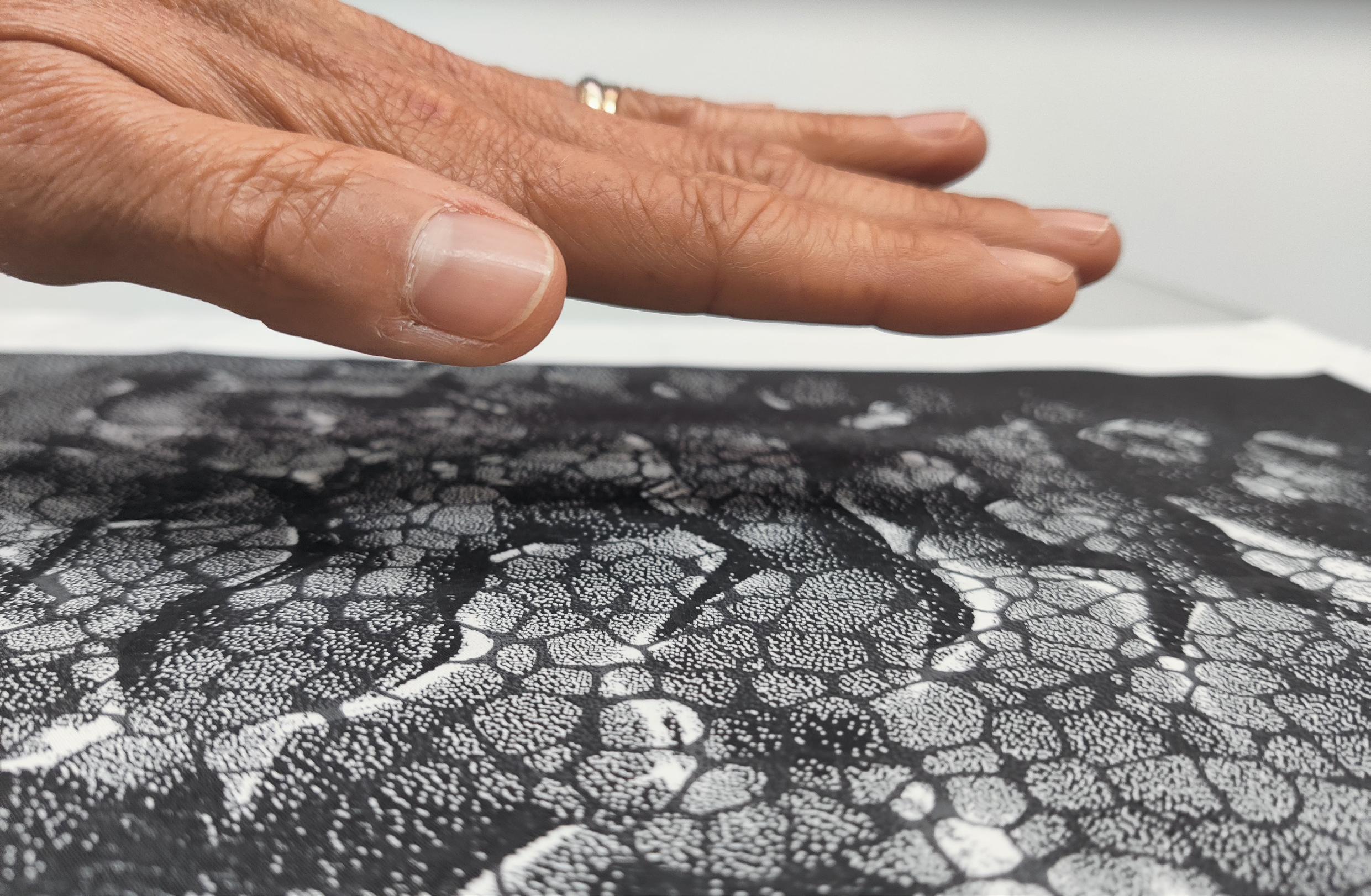
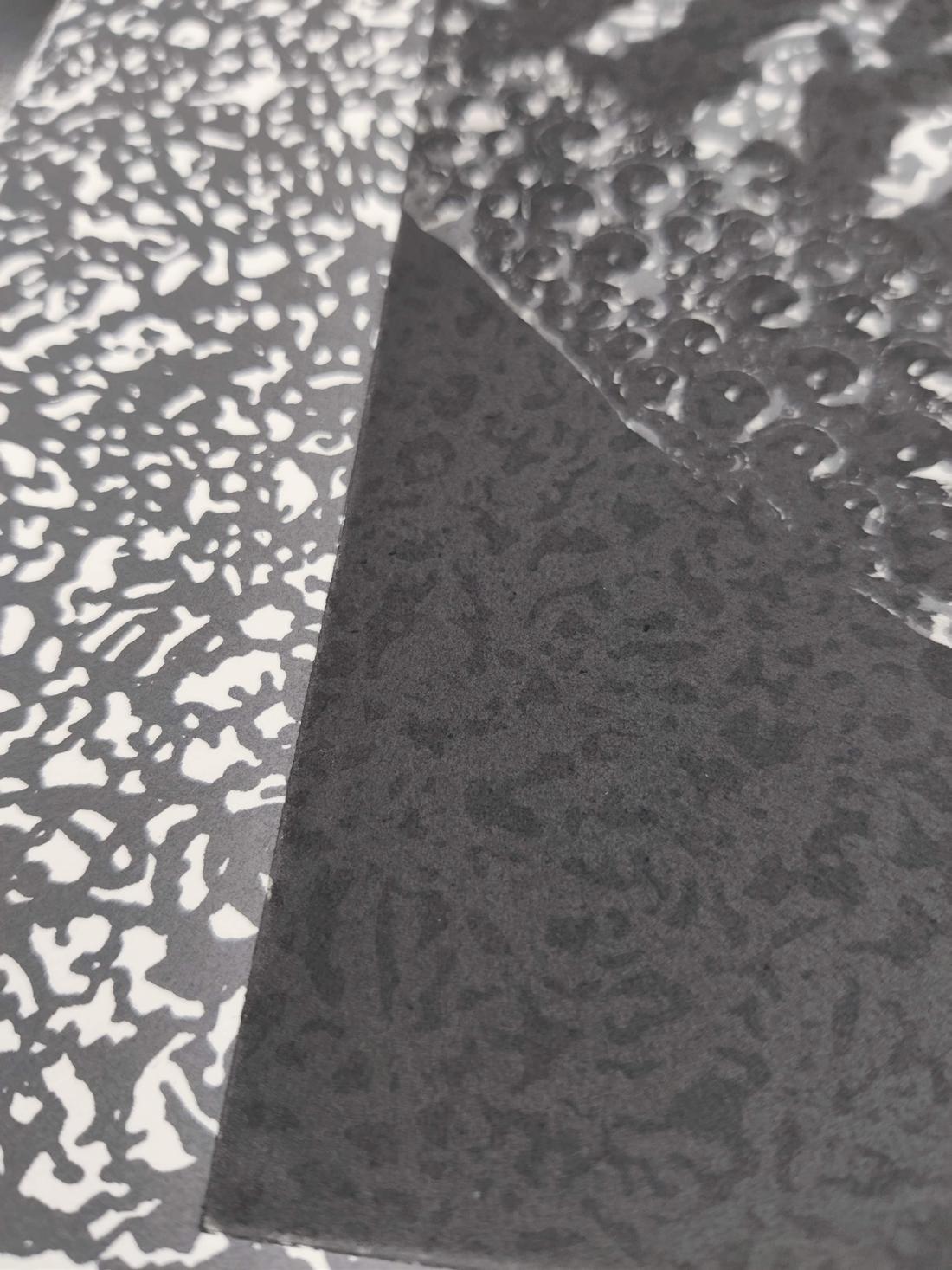
The expanded facilities and the specialist knowledge of technical staff at CFPR and musician Phil Phelps, enabled me to integrate and incorporate new processes and materials into my practice. Through conversation and knowledge exchange the traditional processes of screenprinting and intaglio were expanded to accommodate innovative materials such as graphene, lasercut wood and solar photogravure.

The ideas that were the starting point of the residency were very much the beginning of a wider conversation. The residency enabled multiple fields of investigation leading to both image and material developments in an almost constant shifting of understanding.
By taking key ideas into other fields such as working with novel print processes, photography and sound, the traditional printed
surface became a matrix of multiple possibilities.
By working with Cymatics and photography the edition image evolved beyond the materials. The resulting images forced a change in my approach. To preserve the rhythmic velvet patterns and sensory flow of the captured liquid sound it was necessary to move away from woodblock, as initially planned, to photogravure. Traditional hand printing would combine both screen and intaglio layers making visible the unseen structures and material presence in a physical process of exchange.
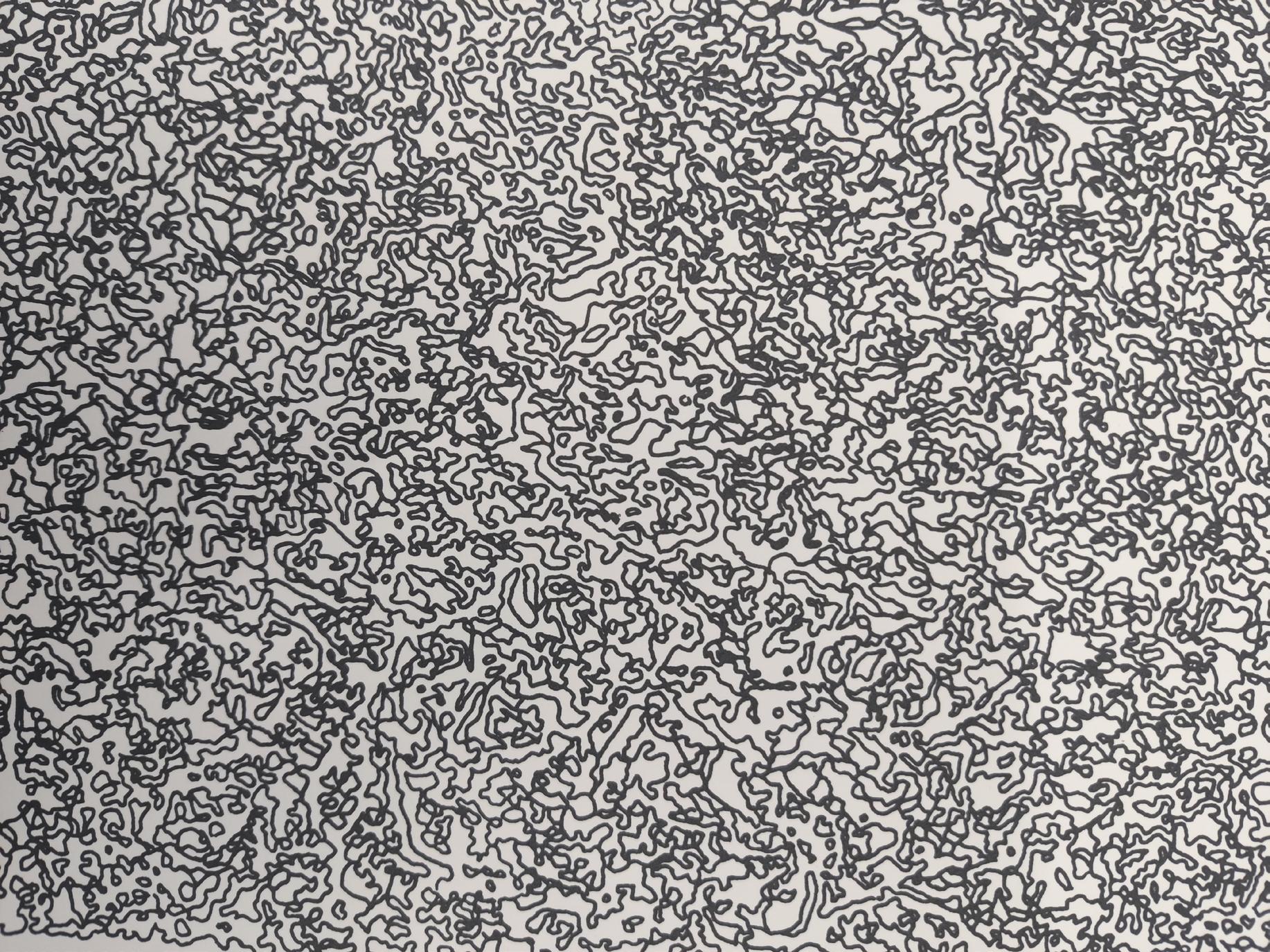
My interrogation and interest of my walking body as a receiver and conduit of unseen energy led me to explore the print surface as a cocreator through touch, with the aim to produce a sensing, responsive print surface.
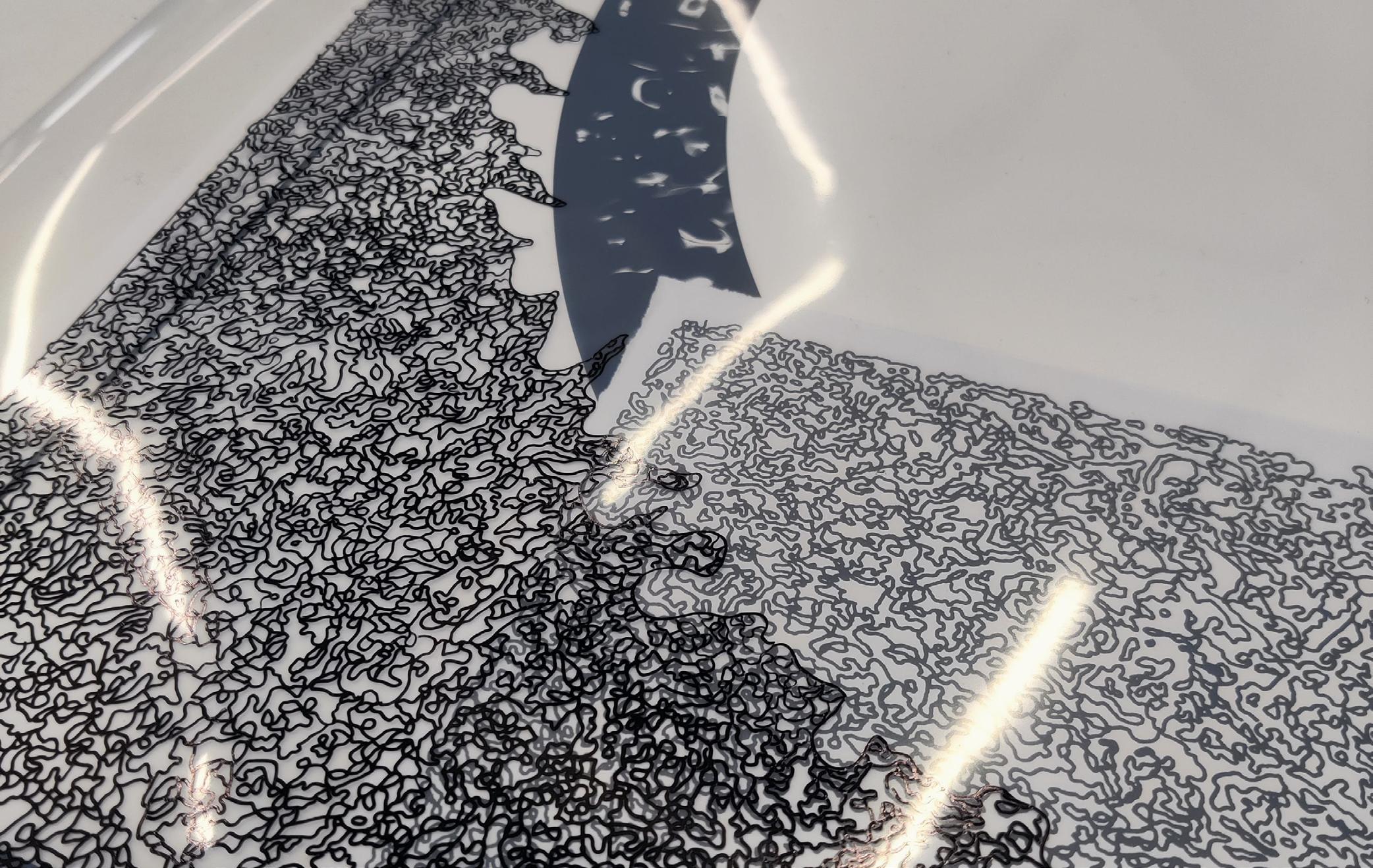


Cymatics was first used in 1967 by Hans Jenny, a physician and natural scientist who used the term to describe the study of wave phenomena and vibration. By using this simple method of playing sound through a vibrating membrane, it is possible to simultaneously hear and see sound. Current research
indicates that similar, much smaller vibrations are happening in our bodies. Inside each one of our cells, molecules vibrate at their own characteristic resonance.
matrix: paper, film, and plate combined, connecting above and below the surface. The final edition print at a first glance shows no obvious signs of what lies below the surface. However, almost invisibly, it carries the potential to reveal the unheard in an exchange of energy between the body and ink. So, when wired and connected to a touch board and speaker, as your hand passes in proximity or touches the surface of the print, the performative exchange of energy triggers sound. The unseen revealing the unheard.

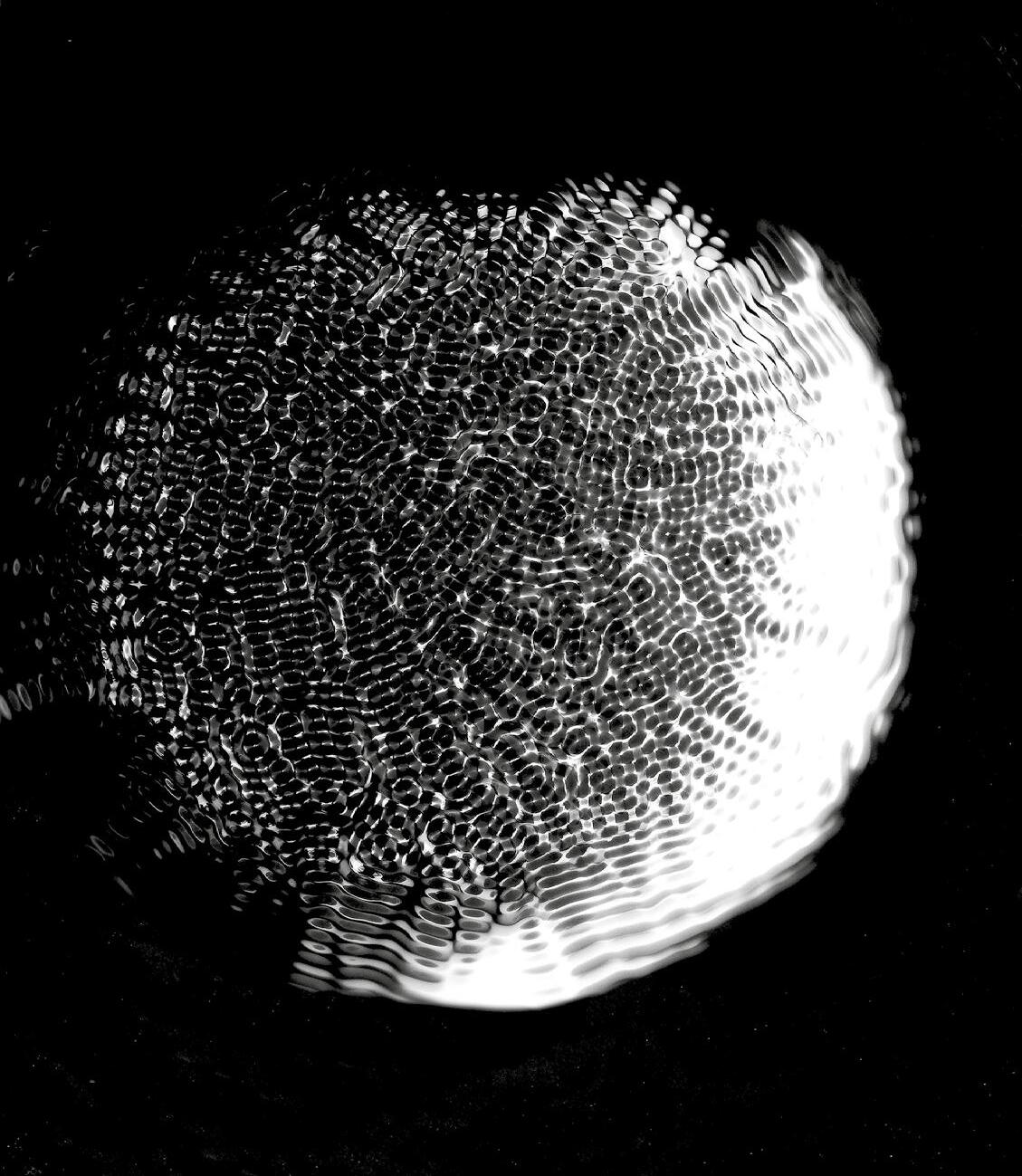

Learning how to combine processes and materials from different fields was the biggest challenge in creating the edition. Listening to and observing researchers working in those fields and learning the points at which those fields or processes overlapped enabled a point to begin testing the idea for the print. Keeping the conversation open and honest about what was working and what was not, built a new knowledge that encouraged approaches from new directions.
Understanding the importance of the balance between the layers of process and materials involved was essential. The success of the print surface as a responsive layer was completely dependent

on the flux created between the different layers. When the environment changed one element it often created a tipping point for the whole surface. At every stage testing revealed unexpected results, informing the next stages. I learnt to accept the necessary compromises between what was needed physically and what was wanted aesthetically.
Learning to be patient and methodical in my testing and documenting has been essential. Accepting the restrictions outside of my control as invisible energies from known and unknown sources contribute to the print and its sensitivity when wired. Remembering there are still many imperceptible forces in our daily lives, which inform our experiences but, which often exceed our ability to capture or represent them.
Such focused and dedicated periods of research amongst other researchers at CFPR enabled a level of investigation rarely achieved in normal daily studio work. Specifically, I learnt about the practical applications possible using graphene in a fine art context and the electronic restrictions linked to that. The residency reinforced that collective creative responses shift understanding and extend the possibilities my work can create.
Tracy Hill studied Fine Art at Bournville School of Art, Birmingham, Sheffield Hallam University and The University of Central Lancashire, Preston. She is the joint research lead of the Artlab Contemporary Print Studios at the University of Central Lancashire, which tests the relevance of printmaking in contemporary, mainstream art by innovation and expanding print practice through a process of continuing collaborative dialogues with artists. Her crossdisciplinary practice investigates and reconsiders the relationship between our developing digital capabilities and the aesthetics of the traditional hand created mark.
